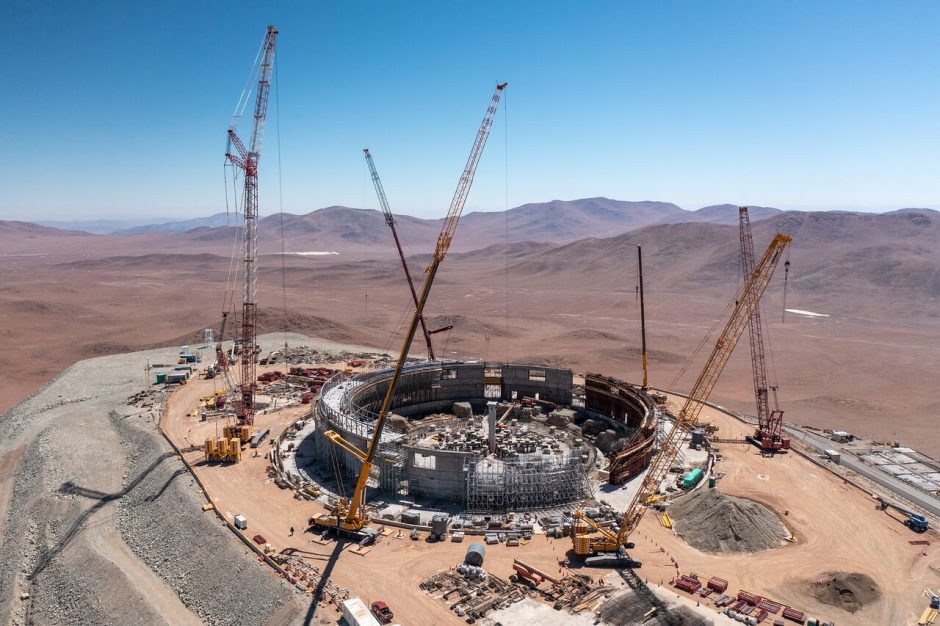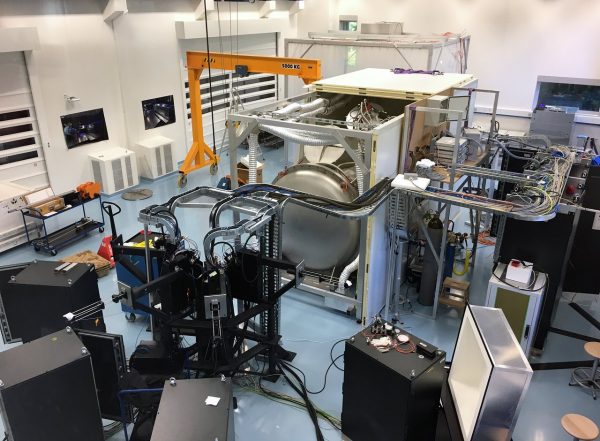ANDES, the spectrograph in a quest for life in the Universe

The European Southern Observatory (ESO) is endorsing a new spectrograph for its future giant telescope. Switzerland is contributing thanks to its expertise in exoplanets and in high-precision instruments.
ESO has started the design and construction of the ArmazoNes high Dispersion Echelle Spectrograph (ANDES) with an international consortium involving the University of Geneva and the University of Bern, the two host institutions of the National Centre of Competence in Research (NCCR) PlanetS. The project will cost approximately 120 million euros and Switzerland is one of the main contributors both on the instrumental and scientific levels. This spectrograph of second generation will be installed at the Extremely Large Telescope (ELT), the future giant telescope of 39 meters diameter, currently under construction in Chile. ANDES will enable amongst others, to probe the atmosphere of exoplanets looking for traces of life, or to study exoplanets forming in their protoplanetary disks.
The agreement for the design and the construction of ANDES, between ESO and the consortium of institutions which the Universities of Geneva and Bern are part of, has been signed today the 5th of June 2024, at the headquarters of ESO in Germany by ESO’s Director General Xavier Barcons, and Roberto Ragazzoni, president of the Italian National Institute for Astrophysics (INAF). INAF is leading the consortium of this instrument costing 120 million euros and involving 13 countries, the equivalent of a small space satellite.
ANDES is a powerful spectrograph, an instrument decomposing light in its various colors, allowing astronomers to determine the properties of astronomical objects, such as their chemical composition. It will be installed at ESO’s Extremely Large Telescope (ELT), the future telescope of 39 meters in diameter, already in construction on the Armazones mountain, in the Atacama Desert in Chile. The instrument will have a record precision in the visible and near infrared wavelengths, and joint with the powerful mirror system of ELT, will pave the way to new research covering several domains of astronomy.
“The University of Geneva contribution will focus mainly on one of the 4 spectrographs that together will make ANDES, the RIZ spectrograph (in the red and near infrared wavelengths) for the instrumental aspect, and on the use of ANDES for exoplanetary systems, for the scientific aspect,” explains Christophe Lovis, associate professor at the University of Geneva and Swiss representative in the ANDES consortium. “ANDES will indeed enable to probe the atmosphere of exoplanets to search for biosignatures. It will be a key asset for the scientists of the Life in the Universe research Center (LUC), the newly created research center of the University of Geneva which tackles the difficult question of life elsewhere in the Universe,” details Christophe Lovis.

ANDES benefits from the expertise developed at the UNIGE, with the RIZ spectrograph that will be assembled and tested in Astrotech’s clean room, as was ESPRESSO.
If the official signature happened today, the teams of the department of astronomy of the University of Geneva are already on the look-out. “We already have a strong optical design for the RIZ spectrograph but some challenges remain to consolidate it. An example: the dimensions of the telescope are so big that optical components of the spectrograph, which themselves will be large, need to stay align to less than a 10’000th of the thickness of a hair, to enable us to detect the signal of an exo-Earth,” reveals Audrey Lanotte, optical engineer at the University of Geneva. “The project already involves a dozen specialists at the University of Geneva. This type of project requires an excellent coordination between the different professions. It is very stimulating!” adds Audrey Lanotte.
The University of Bern is also contributing to ANDES by providing another key component of the instrument: the light distribution point system. It will enable the cross-calibration of the multiple spectrographs with stable light sources. “Switzerland is one of the main contributors of this instrument. The expertise and historical collaboration between the Universities of Bern and Geneva, consolidated the last few years through the NCCR PlanetS, enable Switzerland to position itself as an international reference and leader regarding research and the development of high-precision instrument for the observation and the study of exoplanets, including their formation process,” concludes Christoph Mordasini, professor and executive director of the Space and Planetary Science Research Division (WP) of the University of Bern.
ELT and its 39 meters of diameter should see their first light in 2028, while ANDES will be installed a few years later, around 2032. On top of its unique contribution to the search for exoplanets and life in the Universe, the pairing of ELT with ANDES will enable unprecedented advancement in other fields of astrophysics such as the measurement of physics’ fundamental constants, the study of distant galaxies, or the detection of the first stars of the Universe.
Categories: News

